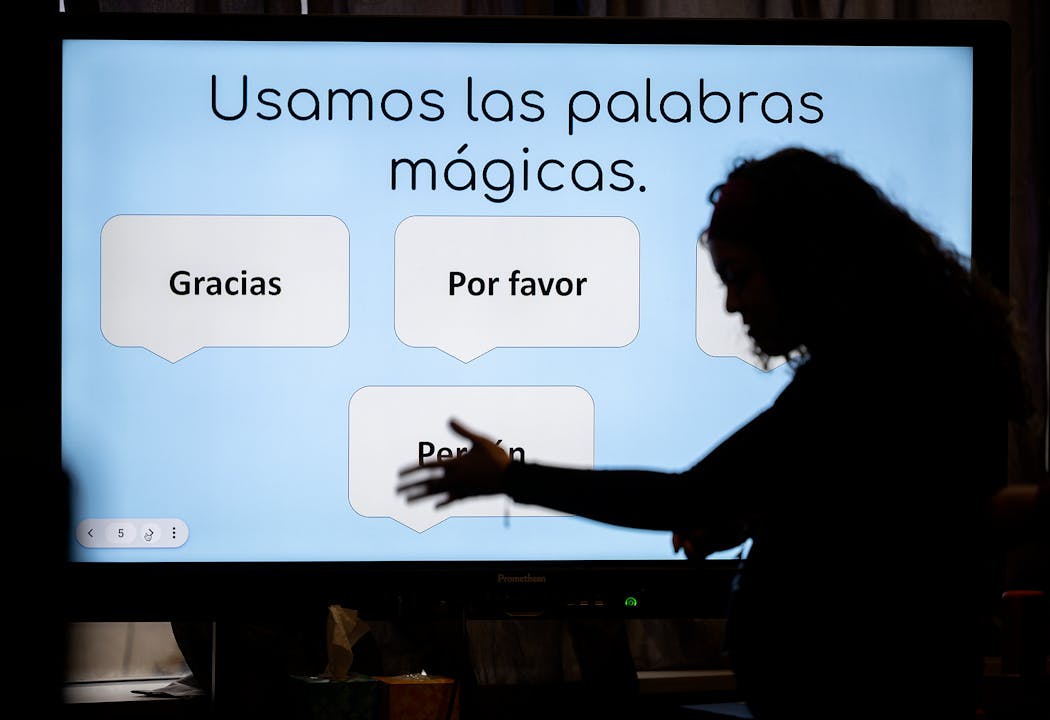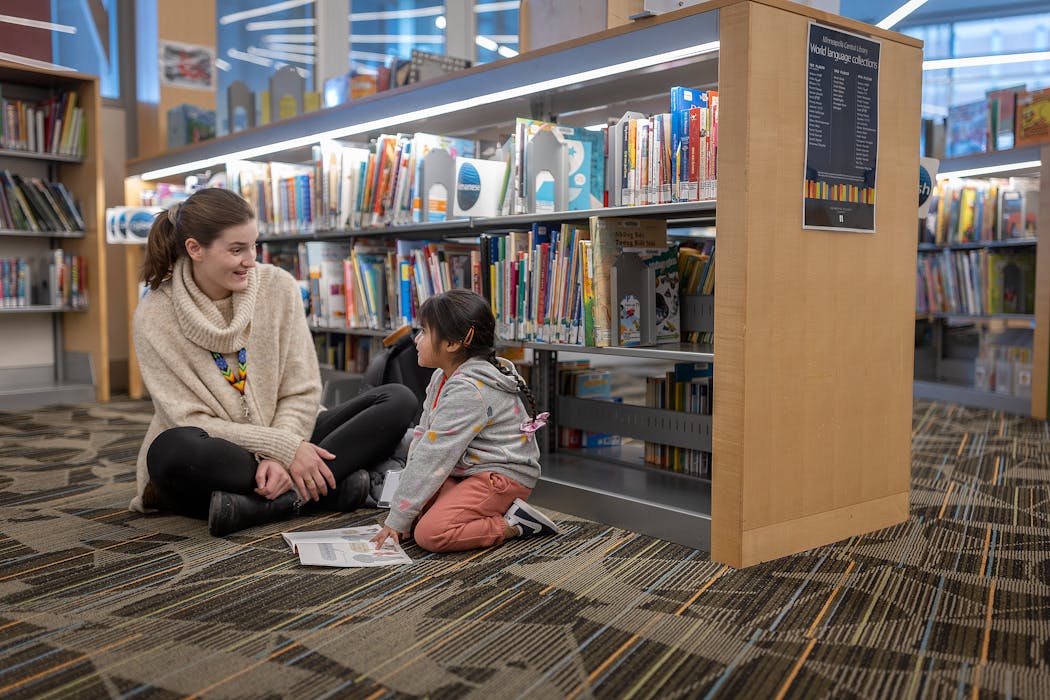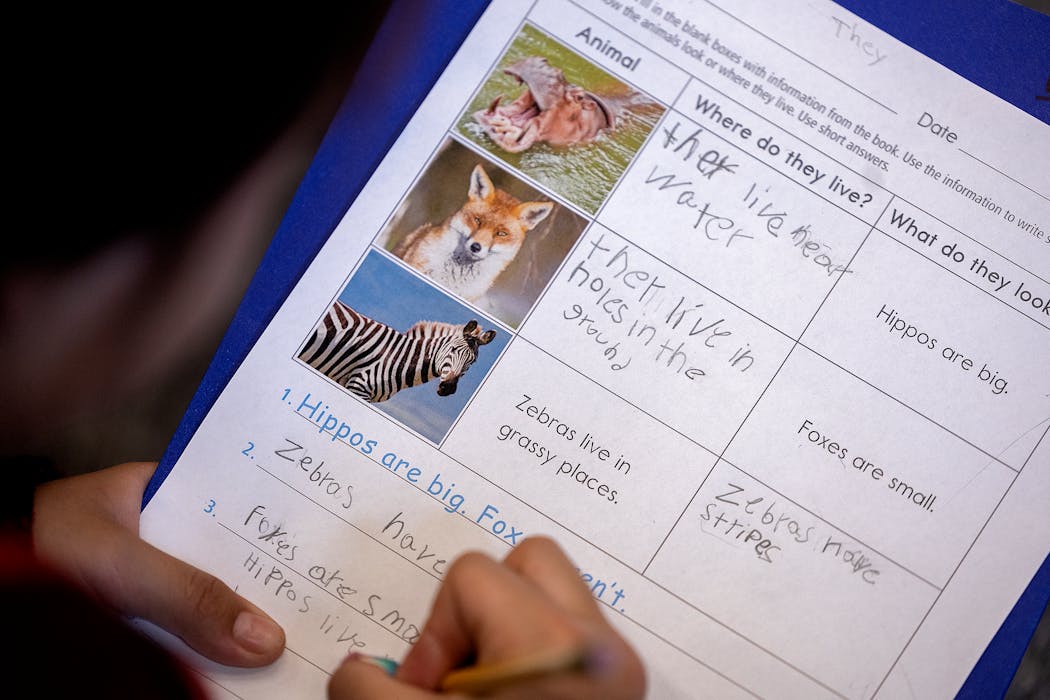Schools across Minnesota are enrolling hundreds of new students who have arrived with a recent wave of Latin American migrants, prompting a midyear scramble by district leaders to make sure they can offer the language and support services the young newcomers need.
The students' arrival has boosted enrollment numbers in public schools, which get funding on a per-pupil basis. But it has also stretched resources in districts that need to hire more Spanish-speaking educators while facing multimillion-dollar budget cuts. Many of the students are living in homeless shelters, hotels or in small apartments they share with two or three other families. Some have missed months or years of schooling in their home country, and many carry intense trauma from the violence they fled and their difficult journeys to the United States.
"There's a big gap in what we can do and what is needed," Marion Tizón, director of the Office of Latine Achievement, a new department in Minneapolis Public Schools. Tizón's department is developing a plan to better support the new students, but it's hard to know how long the influx of asylum seekers will continue. Staff in Minneapolis schools have been trying to predict how many families to expect based on the number of people coming to the border. But that's hardly an exact science, because many families are going to other U.S. cities first before coming to Minneapolis.
Minnesota now ranks as a top destination for migrants accepting free plane tickets to leave New York City, where homeless shelters are struggling with record numbers of asylum-seekers. County officials have said they offer any new arrival much the same help offered to any family in need, and that the county is applying lessons learned from responses to recent waves of immigrants from Afghanistan and Ukraine.
"I haven't heard of a place that has got it down," Tizón said. "We're all doing what we can."
The Bloomington and Wayzata school districts are also serving students new to the country, many of whom are living in homeless shelters. Bloomington schools have 100 more newcomers identified as homeless or highly mobile than last year. Wayzata schools enrolled students from 36 Ecuadorian families.
Richfield has enrolled more than 120 newcomers (including some from Afghanistan and Somalia as well as Latin America) so far this school year. That's up from 80 for all of last school year and nearly double the number that came in 2021-2022.
Minneapolis schools have 800 more English language learners than a year ago. Now, more than 2,500 students — nearly 9% of the district's student body — are newly enrolled students who speak Spanish as a home language.
It can be difficult to track how many of the students are new to the country, but most of the Spanish speakers are newcomers, said Muhidin Warfa, executive director of multilingual programs for Minneapolis schools.
"As much as we talk about need and numbers, I really think it's important for the community to understand these students bring cultural and language assets to our community," said Kasya Willhite, the director of multilingual learning for the Richfield school district.
Tizón agrees. And for Minneapolis, the new students have helped stabilize enrollment, which was predicted to continue to decline this year.
"I'm sure there are plenty of people who are going to say, 'Why are we putting any energy into this if we have all these other issues?'" Tizón said. "Bottom line, we need more kids. We want to survive as a district; we want to grow, and we want to better our education so that we are giving the best education we possibly can to absolutely everyone."
Some districts have separate schools for recent immigrants, but Minneapolis hasn't adopted that model. Its dual-language schools, which teach in English and Spanish, are among the few Minneapolis public schools near capacity. That means many students are in buildings and classrooms without many Spanish-speaking teachers or support staff.
Though the district has always had immigrant students, the recent spike has meant that every school has newcomers, Tizón said.
"Little elementary schools that have been historically pretty white and not diverse now have a population of newcomers," she said. "Our biggest need in the district is to get bilingual staff on the ground in every school."
Frustration and success
Christie Roiz-Guevara, a student and family advocate, is one of the few full-time bilingual staff at Edison High School in Minneapolis. She's often called to help talk to students, particularly those lingering in the hallways during class time.
"The students tell me they get frustrated because they don't understand the teacher, so they just walk out," she said. "We have to find ways to help them feel engaged and involved in a sense of community."
That's why she's co-advising a new class for the students, where they can get to know each other and hear presentations on mental health and healthy relationships. She has also facilitated group sessions with the school-based therapist. The district is offering additional teacher training aimed at building stronger relationships with the new students.
Many of the new high schoolers are juggling jobs to help their families afford immigration lawyers or pay debts from their journey. Some of the teenagers came by themselves; others traveled with families, sometimes for months. They've told Roiz-Guevara stories about having to leave sick family members behind or continuing the journey after a loved one drowned during a river crossing.
"I had a mom who just broke down and said she'd never seen that much death in her life," she said. "The stories are horrific."
Gloria, who agreed to be identified only by her first name because of concerns about legal status, is a mother of three children, including two who attend Folwell Elementary School in south Minneapolis. She came to the United States from Ecuador about five months ago to join her husband. Her voice broke when she talked of navigating the Darien Gap — a dangerous jungle connecting Panama and Colombia — with her children, the youngest strapped to her back. The tears came quickly as she recalled crossing the river and feeling the current starting to pull her and her baby under the water.
She has been overwhelmed by the number of kind, caring people she's met in Minneapolis, especially through the schools. Her daughter is doing well in her third-grade class, even though she sometimes comes home crying about not understanding English. The girl's teacher recently told Gloria that her daughter is often the first student to correctly finish her math problems.
"I thank God that we are here and they sent us to Folwell school," she said. "In this country, there is a lot of help."

Want to share info with the Star Tribune? How to do it securely

'Safe recovery sites' would offer syringes, naloxone and more to people using drugs. The plan could be in peril.
New Minnesota GOP leaders seek peace with party's anti-establishment wing

Who is Republican Lisa Demuth, Minnesota's first House speaker of color?





